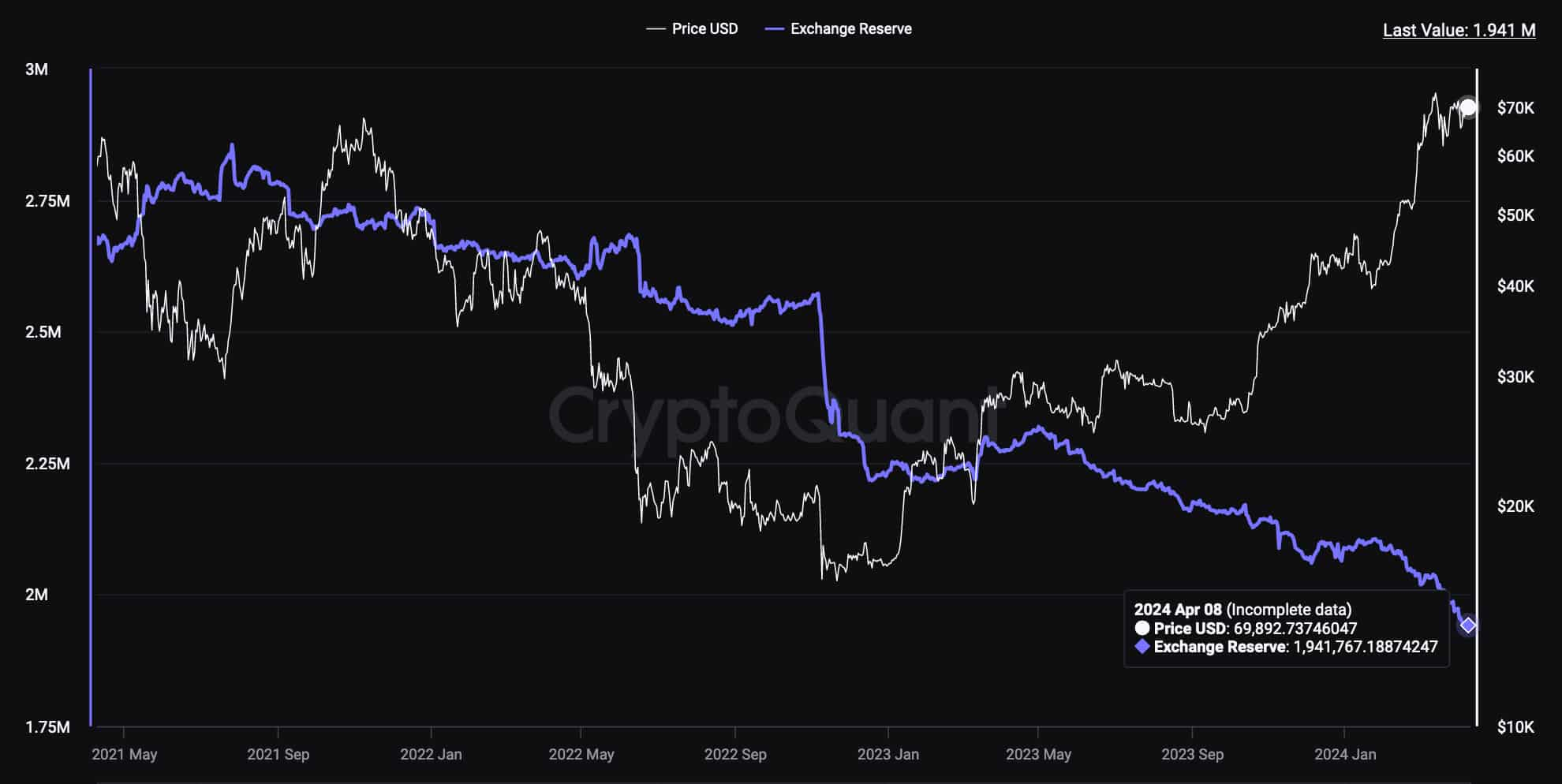Cryptocurrency enthusiasts are witnessing a significant development in the Bitcoin (BTC) market. Data indicates that the supply of BTC on exchanges has fallen below 2 million units at the beginning of April, reaching historic levels. This amount now corresponds to less than 10% of Bitcoin‘s circulating supply, leading to increased expectations of a potential supply shock for the largest cryptocurrency.
Bitcoin Supply on Exchanges Falls Below 2 Million
Data from CryptoQuant on April 8th reveals that there are a total of 1.94 million BTC held in wallet addresses known to belong to cryptocurrency exchanges, which is approximately 9.8% of Bitcoin’s current circulating supply of 19.67 million units.

Since reaching a peak of 2.85 million BTC in July 2021, the supply of BTC on exchanges has continued to trend downwards significantly. This trend reflects Bitcoin investors’ preference to hold rather than actively sell or trade, as evidenced by the withdrawal of BTC from cryptocurrency exchanges.
A supply shock in Bitcoin would occur after a sharp decrease in the supply on crypto exchanges against increasing demand. This scenario typically happens when higher buying volumes meet lower selling volumes, causing the price to move sharply upwards. Contributing factors to the supply shock include the depletion of exchange supplies due to high-volume BTC withdrawals and a significant reduction in the supply available for trading, both of which could potentially drive up the price.
The 4th Bitcoin Block Reward Halving Could Intensify the Supply Shock
On the other hand, the 4th Bitcoin block reward halving, which is expected to occur on April 19th and happens approximately every four years, is anticipated to intensify the potential supply shock. Following each halving, the BTC reward given to miners per block mined is reduced by 50%, decreasing the flow of new supply to the market. Bitcoin Magazine suggests that a supply shock for Bitcoin is imminent, pointing to the decrease in supply on exchanges and a series of factors including the block reward halving.
The reduction in new supply due to the block reward halving, combined with the decrease in supply on exchanges, could amplify the potential supply shock’s impact on the price. With the diminishing supply and increasing demand for BTC, the stage is set for a potential sharp rise in price.

 Türkçe
Türkçe Español
Español









